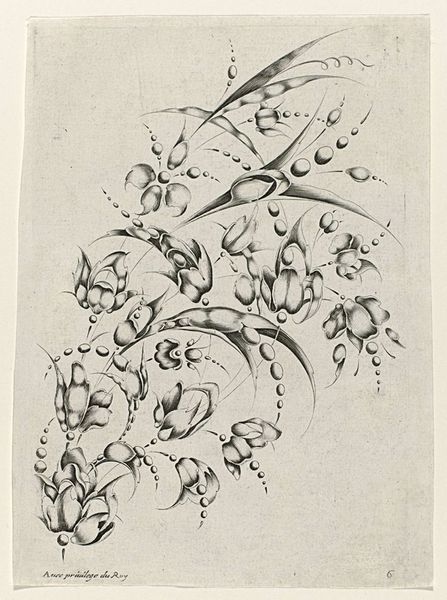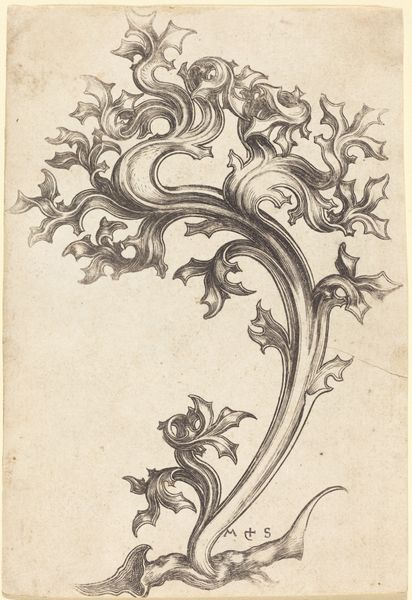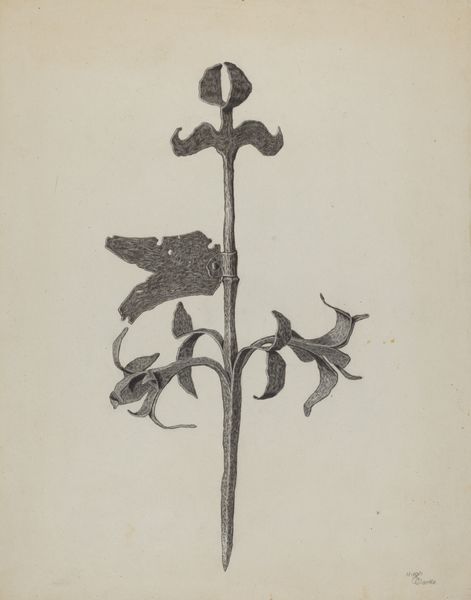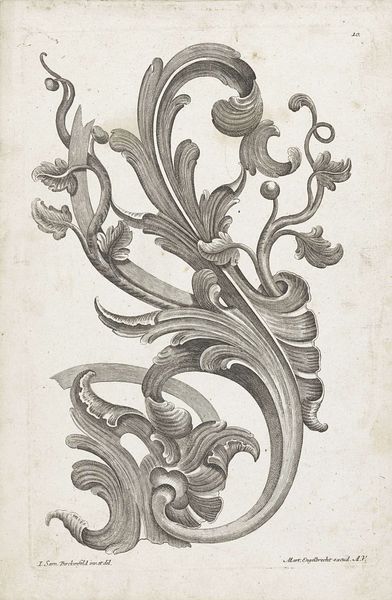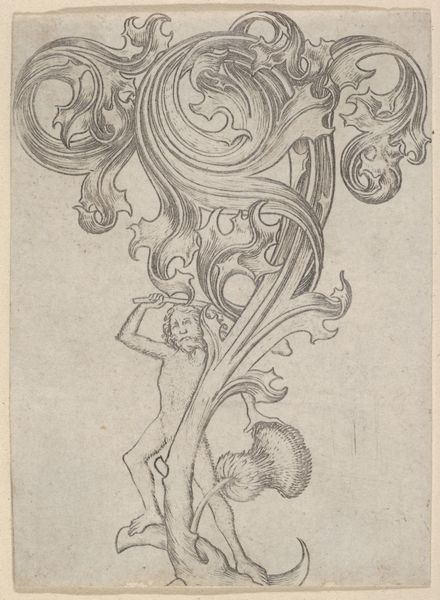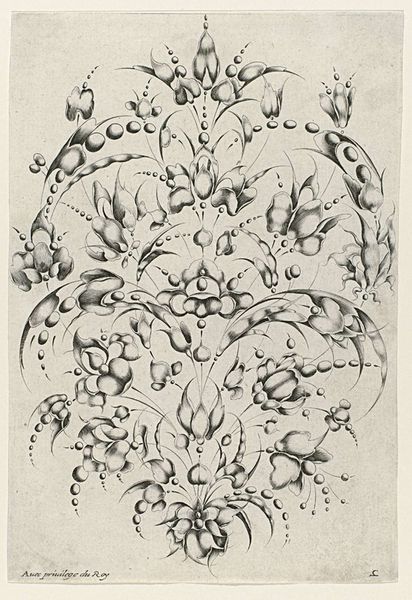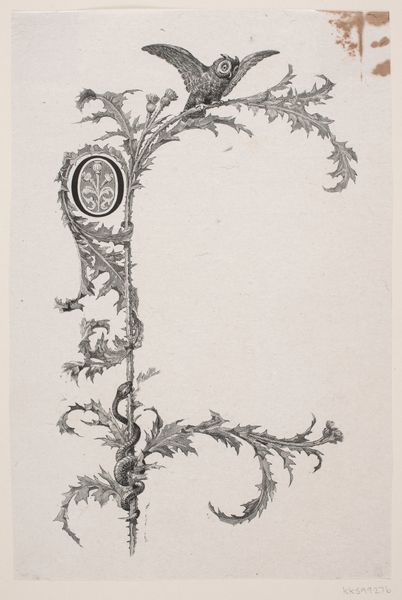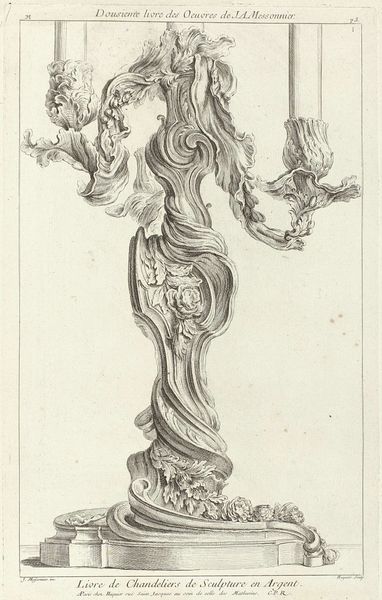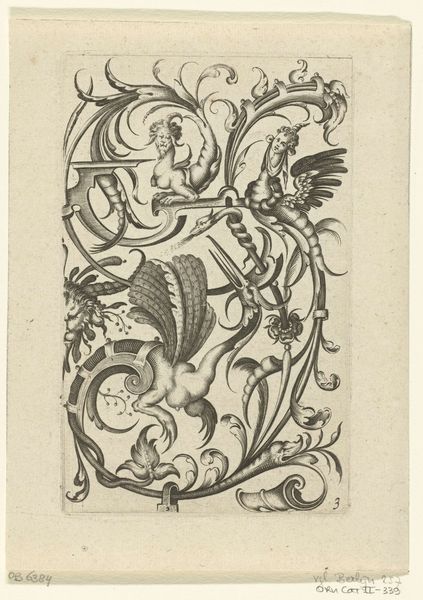
drawing, print, paper, engraving
#
drawing
#
medieval
# print
#
paper
#
form
#
line
#
northern-renaissance
#
engraving
Dimensions: 140 × 95 mm
Copyright: Public Domain
Curator: Standing before us is a print entitled "Leaf Ornament" by Martin Schongauer. While the piece itself is undated, it offers a fascinating look at Northern Renaissance printmaking. Editor: The intricacy of line is quite striking. There's something almost sculptural in how the light plays across this seemingly simple botanical form. The way it’s rendered makes it feel… weighty, metallic even, which is odd considering its subject. Curator: Indeed. As an engraving, Schongauer meticulously cut lines into a metal plate, likely copper, applying ink to then transfer that image onto paper. This allowed for multiples, thus extending the reach and audience for such designs. Consider, too, the cultural function of ornament during the period – a readily accessible way to adorn objects, buildings, and even other artworks. Editor: The lines give depth but I am also thinking of the actual process itself, the labour intensive production behind it, particularly when it's distributed across a market for decorative items, architectural embellishments or pattern books for artisans. What sort of access would have existed, I wonder, to such artistry in its time, what implications existed around the consumption of these prints, beyond simple access. Curator: Exactly! These prints played a crucial role in disseminating artistic ideas. Schongauer’s influence as a printmaker extends far beyond his own workshop, affecting how people conceptualized and incorporated design into their daily lives. It moves art beyond devotional function. The print becomes democratized, commodified and its purpose realigned towards social roles such as that of mere design. Editor: I see that influence. Thinking about the lineage, it emphasizes a complex dance between artistic innovation and widespread distribution which underscores questions concerning originality versus mass reproduction within craft and art economies that resonate still today. Curator: It makes you appreciate the enduring relationship between an artwork and the circumstances that propelled its creation and subsequent distribution. It served the artistic communities in profound ways. Editor: A final reminder, perhaps, to value not just the aesthetic result but the layers of material process embedded within it.
Comments
No comments
Be the first to comment and join the conversation on the ultimate creative platform.
